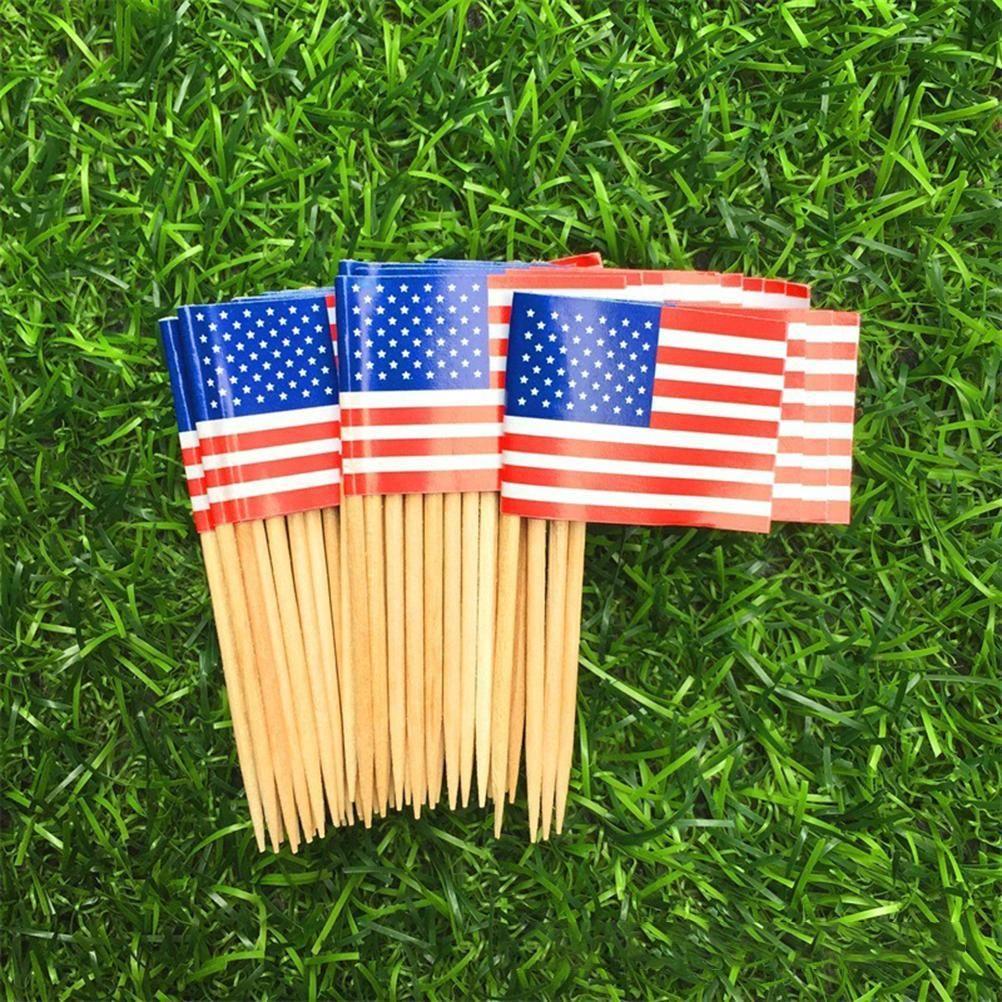It has become a necessity that food be presented in appealing ways in both events and restaurants. Well-crafted, tailor-made food flags can improve the appearance of food and market a brand or a theme. Layout optimization makes every flag clear, legible, and aligned with your general approach to presentation. Slight mispositioning of the design can lessen the visual effects. The correct layout enhances visibility and will give your food display memory. Most of the businesses and organizers of various events use personalized designs to interact more. This guide is concerned with approaches and tricks for optimizing the value of custom food flags.
Flag Selection
Lay out optimization is dependent on the choice of the right type of flag. Quick-service meal fast food flags are generally utilized and require bold graphic images. Toothpick food flags are best suited to bite-sized products and must be sized carefully. Individual servings of food are given light branding through mini food flags without cluttering the layout. Adequate choice eliminates crowding of the design elements. Having the printed material proportional to the flag is designed to make it easier to read. The regularity of the theme in all flags produces unity in presentation. Party food flags need to be colorful and lively to be the most popular.
Design Clarity
Design in any printed material is a question of clarity. The food flags should be printed in high-resolution graphics to help them be sharp in text and pictures. Do not overcrowd little areas with too much stuff. Use fewer colors, preferably one or two colors. Even at a small size, fonts have to be legible. Balance icons or position logos. Adequate space between items enhances good aesthetics. This will make your food on sale look business-like and appealing to customers.
Layout Balance
Balanced layouts are impressive to the eye. Make things even to make them look tidy and business-like. Grids will help you place logos, text, and ornaments. Use the same distance between words and icons. Individualised food flags have advantages of several advantages, in that they are easily understandable. Experiment with vertical and horizontal positioning to determine the best fit of the flag size. Balanced designs enhance the popularity of custom toothpick flags both in events and commercials.
Color Strategy
The choice of colors influences the way your flags look. Keep contrasting colors so that the text is clear over the background. Draw attention to important details (logos or special messages). Keep the palette to a minimum so that there is no distraction. The toothpick flags normally need bright or vivid colors to attract people to notice the flag on sight. When choosing colors to accompany the display, think about the food you are presenting. The design should not be too complicated with too many patterns. Food element communicators. Each food element communicator has been arranged in the identical colour scheme.
Branding Focus
Branding must be incorporated as well. Placement of the logo needs to be victorious yet not overwhelming. Display taglines or product names in printable fonts. Toothpicks of a specific size may be sourced with a logo on them, which further strengthens the brand during an event. Make sure that font and icon styles are in line with the overall brand identity. The layouts should be professional in order to be commercial. Familiarity among guests or customers is created by using a similar branding on all flag toothpicks. Strategic branding will give the custom flags a memorable impression.
Practical Tips
Test designs prior to mass production. Print sample flags to verify readability, color accuracy, and spacing. Modify the design according to the trial test to perfection. Work with software that enables elements to be placed accurately. Consider the orientation of the flag in order to get the best display on plates or food trays. Have regular margins and do not overcrowd. These sorts of steps will ensure every custom food flag is aesthetically pleasing and operational.
Material Quality
The selection of the appropriate material influences the durability and the presentation. The custom-made food flags must be created using food-safe and high-quality materials to avoid tearing and fading. Gloss and matte finishes add color and decrease glare to improve readability, respectively. Toothpicks or miniature versions require support so as not to bend. Dish and tray Flags maintained their form by proper choice of materials. Batch consistency gives a professional appearance. The printing method and color vibrancy depend on the material as well. Materials of high quality will help keep your custom toothpicks and flags appealing during events.
Size Precision
Correct sizing is extremely important to a well-organized appearance. Large flags will engage little plates, and small flags will be illegible. Do not finalize layouts before measuring plates, trays, and food items. Toothpick flags should fit appetizers well, and Wax papers with logo fit smaller desserts. All flags are made in the same size to give a smooth look. Have templates to ensure a consistent size in the process of designing. Size matters because all flag toothpicks must fit perfectly with your entire food system. The right proportions make flags attractive and practical.
Conclusion
The layouts of custom food flags can be optimized to make sure your presentation looks attractive and professional. Appropriate choice of a flag, clear design, and balanced layouts enhance clarity and attractiveness. Branding your business with the right color tactics will do your business a favour. The regular location and branding lead to awareness and the achievement of memorable experiences. By designing to be tested before completely printing, the design errors are avoided, and the impact is maximum. Every single aspect of the presentation, font usage, and spacing matters. The layout optimization is an investment that increases the general attractiveness of tailor-made food flags. Good layouts will convert plain flags into beneficial event and business promotion tools.



